PRESERVING CAPE HERITAGE AND CULTURE THROUGH EXPLORING VISUAL ARTS AND EDUCATION
Tulis
Artists: Shaheen Soni & Shafeeqa Effendi
September 2023
Teddy’s Room, Woodstock
The Tulis exhibition, held during Heritage Month in 2023, showcased work by two talented Cape Town artists, Shaheen Soni and Shafeeqah Effendi. Teddy’s Room in Woodstock, based in a converted church currently being used as a second-hand furniture store, afforded OCTH a beautiful, homely space. The space was successfully converted into an art gallery, offering an aesthetic experience to gallery-goers, invoking a sense of warmth and comfort.
Heritage month in South Africa celebrates the diversity and unique cultural and heritage landscape of the country and affords us an opportunity to reflect the role our ancestors play in how we currently observe our traditions.
Tulis presented beautifully crafted works that represent the Arabic script, calling on an age-old convention of writing, infused and enhanced by Cape Malay tradition. A fundraiser talk was presented by Faheem Rhoda-Jackson, a renowned Cape Town calligrapher, demonstrating the importance of preserving this artform. Jackson, through his work, explores how the unseen tangible culture of our community and be instrumentalized can act as a reminder of our past but can create opportunity for growth and renewal in the future. It is important to shed light on this unseen, previously hidden tangible culture and bring it to life by giving it new meaning in present day contexts.
Throughout heritage month, we used social media as a means to explore the origins of Tulis at the Cape by looking at our tangible heritage through the form of archival manuscripts. “To Tulis” was practiced at the Cape for decades and began when political prisoners and certain enslaved people would write texts from memory, the most popular being the Quran since it became the basis from which the sheikhs (leaders) taught from and spread Islam.
The earliest non-European examples of writing at the Cape can be found in archival records dating back to the 1700s which highlights the knowledge enslaved people brought with them from their places of origin to the Cape which contributed to the melting pot of cultures that exists in present day South Africa.
Artists Shaheen Soni and Shafeeqa Effendi are great examples of members from our community who use art as a means to refresh their heart and soul. Both of these artists intentionally include aspects of their faith in their work and use their faith and spiritual experiences as inspiration for their artwork. By examining the work of Soni and Effendi, we can understand the Cape Malay culture not just from a historical perspective but we get to see and share the emotion and faith that gives life to this culture with rich traditions. These artworks on show reflect personal stories of hope, tranquility, connection, deep faith, beauty and submission.
The intention of this exhibition was to understand how faith functions in people’s sense of belonging, given the fact that a lot of the Cape Malay traditions and identity stems from the traditions in Islam. The Cape Malay identity today is vast, yet it is a product of a rich history that is filled with subjugation, as well as hope, perseverance and resilience. This sense of belonging that many Cape Malays hold has a lot to do with the history in which this culture came from and therefore it is important to understand what and who contributed to this cultural identity and how we continue to preserve and explore it.
Calligraphy artist Faheem Rhoda Jackson’s work is vital to the closing of this exhibition. Jackson introduced us to the history of writing Khatt al- Janubi (the Janubi script) and the importance and relevance of preserving this practice. Khatt- al-Janubi, meaning “southern script” is initially based on the writing of the early Muslims at the Cape such as Tuan Guru. In the history and development of the Arabic scripts, we find “Eastern” and “Western” scripts and also “Chinese/Seeni” scripts. This is the first time a reference is made to the “southern script” as Jackson hopes to bring more awareness of this part of our history and writing culture.
The Archives
by Abdud-Daiyaan Petersen
In South Africa, many families of Cape Muslim origin are familiar with the term toelies, writing in Arabic. Not many are aware that this term comes from the Malay word tulis literally meaning to write, regardless of the language, script or form.
In the context of Cape Town, the local evolution of tulis is as old or even older than the present community itself. Some of the earliest non-European examples of writing at the Cape can be found in archival records, the most prominent of these is a compilation of Tamil medical recipes found in the diary of the slave lodge schoolmaster and slave Jan Smiesing which dates to the early 1700s. Though born at the Cape, his grandmother Dapoer van Mallebaar was brought from the West Coast of India, and his knowledge of the Tamil script highlights the knowledge that slaves brought with them from their places of origin to the Cape to contribute to the melting pot of cultures that exhibits in present day South African society.
In terms of Muslim writing, the earliest record of the act of writing is the transcription of the Qur’an from memory by the Rajah of Tambora, son in law of Sheikh Yusuf of Macassar. Though this Qur’an did not survive, Dutch Calvinist Minister Francois Valentijn in his account of the Cape records that the Rajah was writing the Qur’an in 1705 for Simon van der Stel’s son, Governor Willem Adriaan van der Stel. Throughout the 1700’s we start seeing various scriptures appearing in the archival realm such as the 1760 letter of Upas, a slave at Stellenbosch, to the elder September of Bougies, requesting prayers for health. What is unique about this letter is that it was written the Lontaraq script, a script still used today to write multiple languages across South East Asia, chiefly the Bugis and Makassarese languages. The name lontaraq comes from the Malay word lontar meaning palm leaf since this script was traditionally written on manuscripts made of palm leaves. We see evidence of Lontaraq throughout the colonial archive as well as within the local archive of the Cape Muslim community. Some of these include the talisman written in 1786 by Imam Noriman, known locally as Paay Schaapie, the kramat at the top of the Tana Baru cemetery in Bo Kaap.
The largest ‘collection’ of Lontaraq would have to be that of Imam Hasnullah Muhammad bin fadhl, known locally as Imam Asnoen and colonially as Jan van Bougies. He was one of the main Muslim educators at the Cape during the early 19th Century and left his mark in a collection of religious books, known as kitabs, held by descendents of one of his deputies, Imam Ismail. Though this collection is largely written in Arabic script, there are also a few notes of his in Lontaraq as well as records of charity collections dating to the period of the first Madrasah, Muslim school, of Tuan Guru. We also see some of his writing in the archives such as a handwritten codicil to his will, again in Lontaraq where he adds that he is a daeng, or a noble of Bugis origin, and that he owned land in Gowa despite tombstone records indicating him originating from Boné, the other side of Sulawesi Island. Apart from this, Imam Hasnullah also wrote in Malay using the Arabic script which is known as Jawi. These we see in his kitab collection as well as in an 1836 letter kept at the Western Cape Archives Repository (WCAR) where he describes his coming to the Cape and details around the Battle of Blaauwberg and Tuan Guru. There are other examples of Lontaraq appearing on slave manumission certificates located in the Slave Office collection of the archives between 1820 to 1834 such as the signatures of Freeblacks Batjoe of Batavia, Laurens of Pondicherry and Lempar of Bougies appearing as witnesses to manumission of other members of the community. The wide use of Lontaraq suggests that it was possibly taught at the Cape and likely by Imam Hasnullah in the Madrasah sessions that he held. Examples of other scripts also survive such as the signature of Ngabeij of Cheribon, a political exile kept on Robben Island where he signs in the native script of Java, Aksara Jawa. Apart from these few examples, the large corpus of Muslim texts and scriptures that survive are in Jawi.
The writing of the Malay language in Arabic persists till today throughout South East Asia where it is termed Jawi. Despite the name, on the islands of Java, Madura and Sunda, the script is called Pegon. As slaves were imported from the Indian Ocean to the Cape, and many learned noblemen, Orang Kaya, were exiled here as well from South East Asia in particular, we can understand how Jawi could become a vogue script at the Cape.
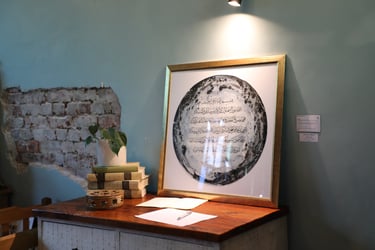


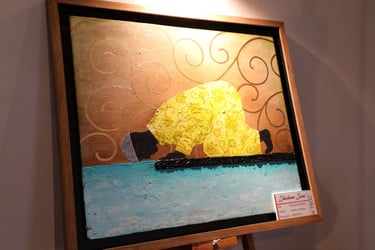
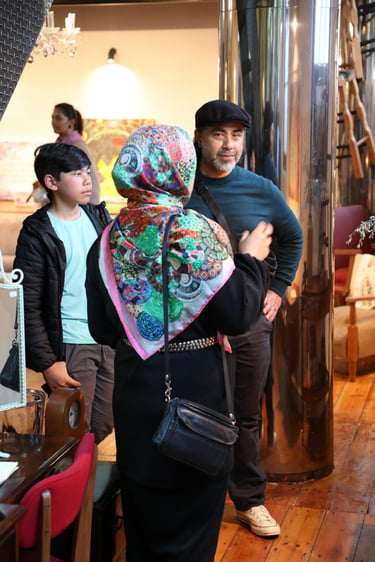


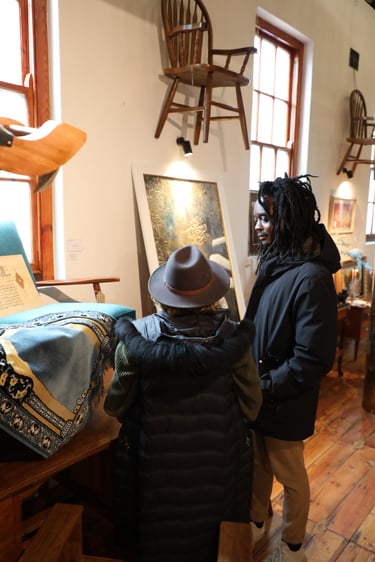
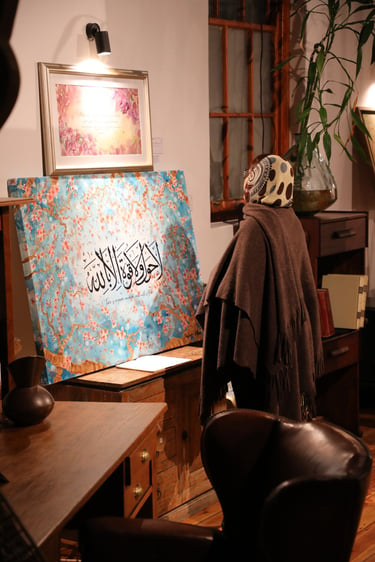
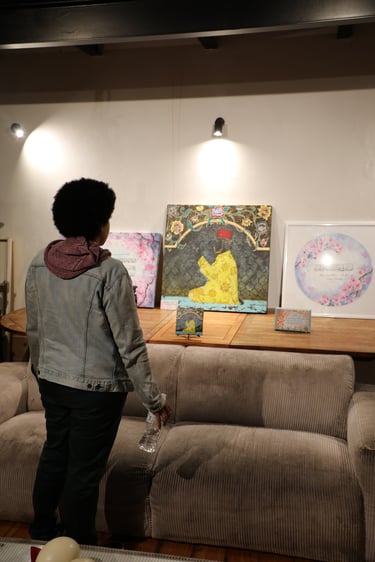










Discover
Contact Us
Our cultural heritage matters
Help us learn and grow by sharing your respectful feedback on our website, exhibitions, social media and more:
Store's Terms and Conditions
